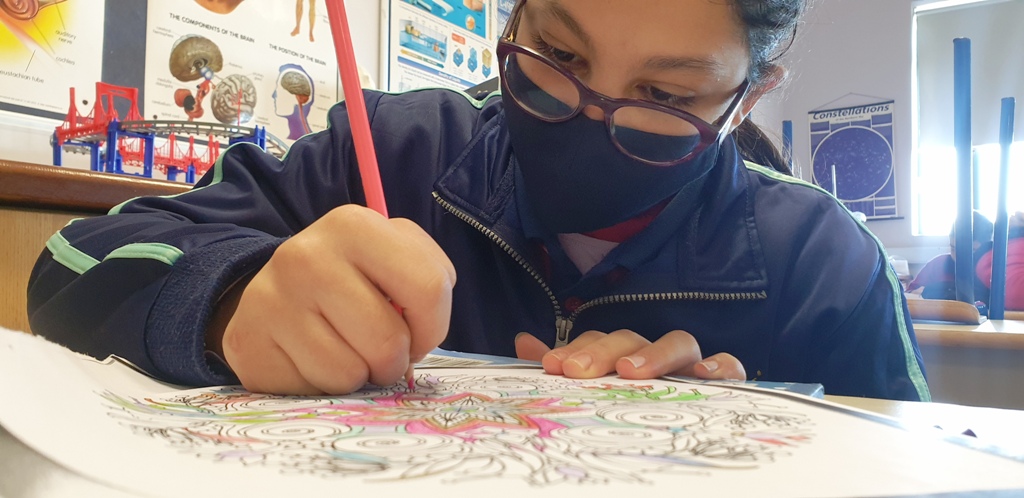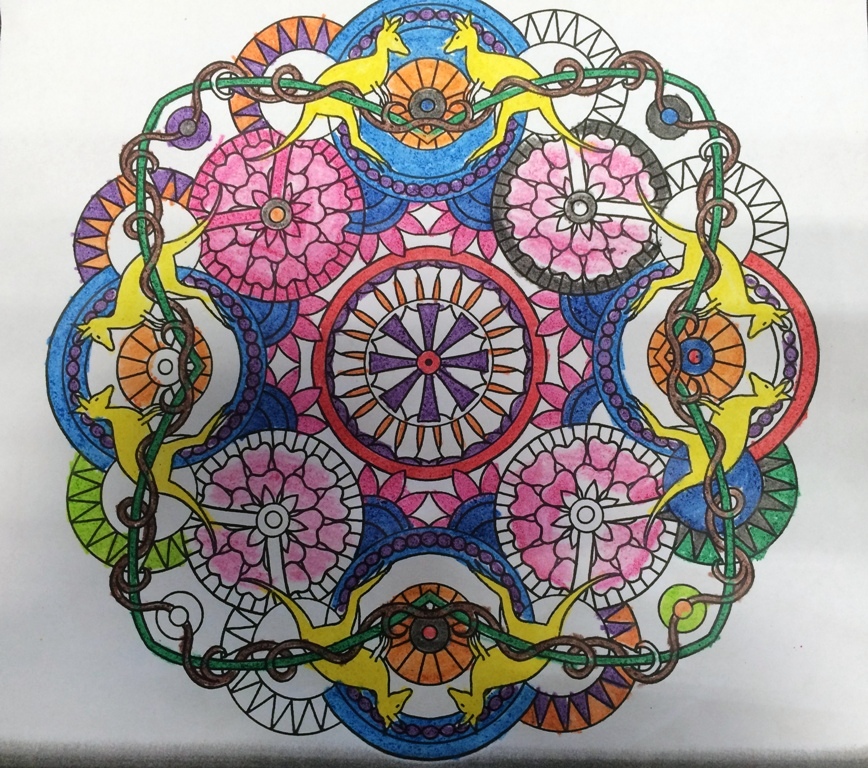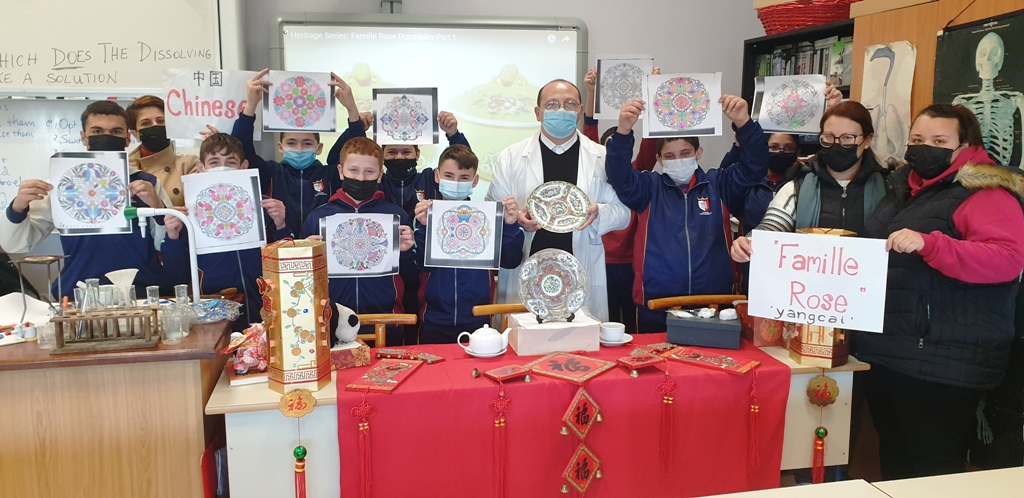St. Margaret College Secondary School Verdala, Applied Science CCP students learn about the making and history of Chinese “Famille Rose” Porcelain
On Thursday, 19th January 2022, a group of Form 3 and Form 5 Applied Science Core Curriculum Programme (CCP) students at St. Margaret College Secondary School Verdala, Cospicua participated in a project about the making and history of Chinese “famille rose” Porcelain. This project was coordinated by the Senior Science teacher Martin Azzopardi sdc and held on the Science China corner which serves as a Montessori Method of teaching. The project theme was related to the Science study unit about Mixing Substances.

The origin of the Chinese “famille rose”porcelain style goes back to the 18th century. This style is characterised by the use of overglaze pink colour which developed during the Qing dynasty. The Chinese refer to this particular porcelain style as “yangcai” (洋彩) which means “foreign colours”. History has it that during the reign of the Chinese Emperor Kangxi (1654 -1722), some Jesuit missionaries developed this particular style in China while working for the Emperor.
The “famille rose” porcelain style comprises a variety of colours ranging from pale pink to deep ruby including other soft colours. In this technique, colours are produced by mixing coloured enamels with “glassy white” – consisting of opaque white enamel called lead arsenate.
During the 18th and 19th century large quantities of “famille rose” porcelain was exported from China to Europe and the United States. Porcelain material was first made in the Chinese imperial kilns of Jingdezhen and then decorated in Canton. Later on porcelain factories in Europe produced their own “famille rose” porcelain wares.
The names “famille rose” (“pink family”) and “famille verte” (“green family”) were actually given in 1862 by Albert Jacquemart. The pink colour used in the “famille rose”porcelain style was first achieved in Europe through the use of purple of Cassius formed by the reaction of gold salts with tin (II) chloride. Purple of Cassius was discovered in 1666 by the German physician and alchemist, Andreas Cassius (1600–1676) of Hamburg and used first on glass. Then it was the Jesuit missionaries working at the Imperial court who introduced this colour to China.
In the making process of Chinese “famille rose” porcelain wares, the oil used in the West to create the gold-red enamel is “turpentine oil” but in China they used “doermendina oil”. The Chinese gold-red enamel originated in Guangdong province China during the reign of Emperor Kangxi. Then it was during the reign of Emperor Qianlong that “famille rose” porcelain wares comprised a greater range of colours and tones with complex images and depictions.
The used colours in “famille rose” patterns are yellow, blue, pink, coral red, light green, “cafe au lait” and brown. During the Qianlong era, many “famille rose” images and styles were made on eggshell porcelain. In the mid-18th century, the production of the Chinese “famille rose” porcelain wares overtook the blue and white porcelain wares and “famille rose” remained popular till the 20th century but the quality of wares produced declined after the Qianlong period.

The copying of Chinese “famille rose” porcelain wares by many European porcelain factories such as Meissen, Chelsea and Chantilly brought the Chinese porcelain export market to a decline.
During this project, St. Margaret College students had the opportunity to observe two fine examples of Chinese “famille rose” porcelain and engage themselves in drawing a “famille rose” pattern using their own creativity with colours.

Teacher Martin Azzopardi sdc and his students offer thanksgivings to the Malta China Cultural Centre and the China Embassy in Malta for their continuous help and support in fulfilling these school study projects. Thanks also go to the class LSE’s; Mr Kenneth Abela, Ms Graziella Pulis, Ms Elaine Schembri, Ms Ingrid Cassar and Ms Juanita Cachia for all their help and assistance throughout this Science China corner project.
Written by
St. Margaret College Secondary School Verdala School, CCP students; Bondin Faydon, Caruana Grazio, Garzia Damian Steve, Gatt Jerome, Corito Cruz, Scerri Miguel, Demicoli Lara, Xuereb Zion and Gialanze Luke with the help of Senior Science teacher Martin Azzopardi sdc.

